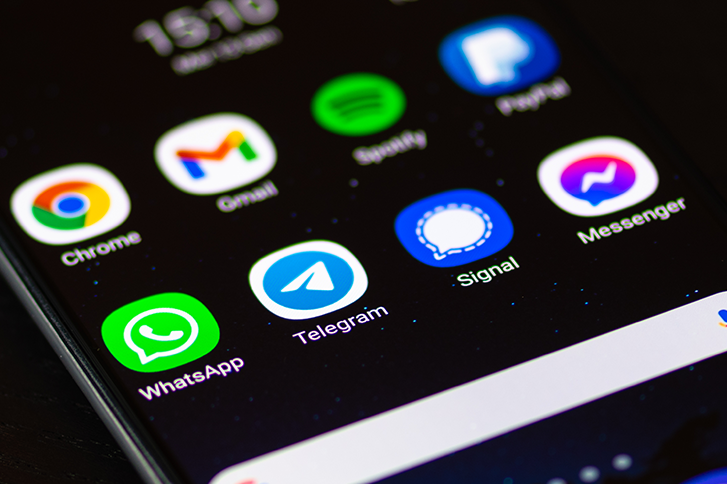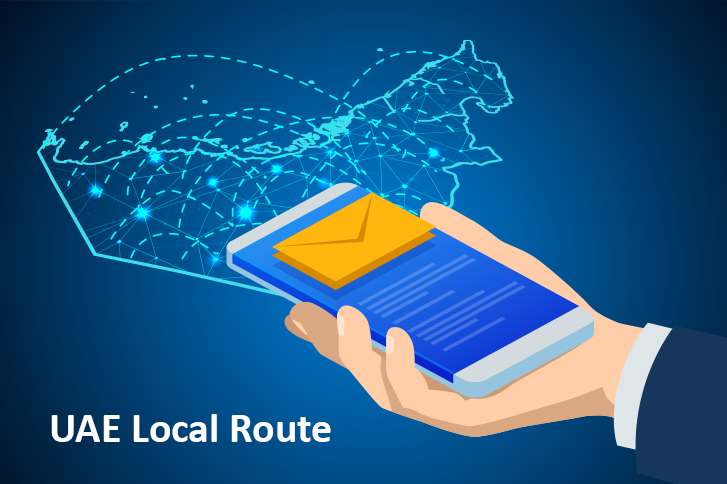To be successful and stay relevant in the ever-evolving market, brands must continually explore new marketing strategies, and replace traditional marketing practices with modern forms of advertising using digital platforms. Being connected is the norm of the 21st century. With search engines, social media platforms and SMS, everyone is plugged-in, round the clock. Millennials are the biggest generation the world has ever seen. They are extremely different from baby-boomers and Gen X due to their relationship with technology and broader world view. Millennials are the generation born between 1981 and 1996, making them the largest consumerist crowd of the present.
Who Are Millennials And How Do They Influence The Market?
In the most basic terms, Millennials are the young population of today who steer forward the world economy. They have constantly been misunderstood and misidentified. The Time magazine, long before, described Millennials as “lazy, entitled narcissists who still live with their parents.” A marketer will have to clearly study and define the target audience and on your research about the lifestyle, habits, likes and dislikes about Millennials it can be seen how this statement by the Time magazine is anything but true.

Being the largest demographic, it is not hard to decipher their influence on the market. The sheer number of products that are available to them, at just a click away, shows the role they play. However, the easy availability does not make life any more convenient for them or marketers. In earlier times, the older generation would buy an object when they feel the need for it.
To quote an example, in the 80s, a middle-class household would go to the market to buy a toaster NOT because;
- They have been bombarded with ads, sub-consciously influencing them
- There is a sale which promises savings if they shop
- Buying the latest model of the toaster will give them social gratification
Rather, they will buy a toaster for the simple reason that they didn’t have one or the one they had, had been broken beyond repair. The research involved before buying an object in those times involved comparing the different models in store they go to or perhaps getting quotes from different stores in the locality. However, today ‘shopping’ has become a science in itself. It is true that the spending culture of today is like never before. We don’t think twice about buying objects that we fancy but may not have much use in our routine life. What influences the millennials to ‘shop till they drop’? Let us examine a few traits of the millennial shoppers;
1. Shopping Has Become An Experience
Earlier, as shown in the example above, shopping was done to fulfill a need or lack of a particular provision. Millennials have influenced the market in such a way that now shopping has evolved into an entire experience in itself. Akin to traveling and exploring, shopping has opened up an avenue to bring novelty, sophistication, and value to one’s life that upgrades the shopper’s perceived class. Make sure the digital experience provided to the target is complete. Optimize your landing pages for better viewership across different devices. Even on a small phone screen, there should be an obvious call-to-action. Try to do away with downtime.
2. They Look Before They Leap
With the advent of computers, mobile phones, and the internet over the last four decades, research has become an easy activity that comes naturally. Purchases are done after much deliberation and comparison. “Looking it up” on Google, checking user reviews and experiences on Facebook, Instagram, and Twitter, and connecting with the brand personality through their web portal give them the entire history and chemistry of the product making them informed buyers. Precise Communications focuses on increasing the visibility of a brand through its triangular approach. This involves bringing up ranking in Google search results, nurturing an engaging online presence through social media, emails and creative website, and maintaining the relationship through SMS campaigns.
3. Boundaries Not A Barrier
The geographical location of products doesn’t matter anymore with the strong freight and logistics industry across the world. Marketers today have the ability to sell products across borders through the right channels and techniques. In this scenario, defining one’s target audience becomes more important. We have built, over the years, a comprehensive and segmented email list of potential subscribers across the Middle East. Websites that appeal to the tastes and aesthetics of millennials all over the world help to bridge the divide of borders. Spreading the message through inclusive content, websites and blogs that show up on all different kinds of devices open up the world for a marketer.
4. Brand Value
In the example illustrated above, we saw the reasons why a particular household might have needed a toaster. That’s not the scenario anymore. Today, a design student might invest in luxury, one-of-a-kind toaster like Dualit 24-carat gold coated toaster or SMEG deco art toaster, not to toast some bread but to prove a statement about aesthetics and taste. This is the power of branding. A marketer will have to align his campaign with the values projected by the brand. Give a personalized touch by being more transparent and imparting a conversational approach to your content. This can be achieved through developing a system to monitor customer feedback and respond promptly, make changes as necessary and then let customers know what action has been taken. This results in more positive feedback.
The Current Marketing Trend
The world is steadily moving on from traditional marketing techniques to new-age Digital Marketing. Though the essential structure of Marketing in itself remains more or less the same, digital marketing is innovative in its flexibility and realness. The basic marketing funnel still remains intact, but the approach to solving the various stages starting from capturing attention to inducing interest in pushing the prospect to buy has evolved and become personalized. Through digital media, the marketer is able to gather intimate data about the target audience which then guides in drafting a campaign whereby the people at receiving-end feel the decision to buy has been made by themselves. The best part of digital marketing is that, as a marketer, you won’t have to wait for reports at the end of a quarter to see the results of your efforts. The reach and impression of your campaign will tell you how effective your strategy has been. You will be able to fine-tune your strategy in real-time based on the dynamic results on your screen, saving you both your money and time.
How do we reach millennials in this digital era? Having examined the way millennials influence market and marketing, and how they make a buying decision, here are five ways in which we think Digital Marketing can be used to reach Millennials;
1. SMS Marketing
Millennials are hooked on the phone all the time! It can be said that mobile phones have almost become a part of the human anatomy. Everything from managing your schedule, taking your notes, telling you time, emails, and entertainment to even tracking your fitness, mobile phone is like a personal secretary that everyone now possesses. Needless to say, SMS marketing should be a top priority technique in a marketing strategy. The Middle East is one of the top nations in the world when it comes to usage of smart-phones. A data shows that on average a text message is read within 4 minutes of receiving. This medium doesn’t require any extra ability on the part of the receiver like the knowledge of the internet or computers or require internet connectivity. Measure the results using the latest technology like Bright Links that will help you in identifying those who have clicked on the URL and later approach them with more relevant contents.
2. Social Platforms
It is not unknown that millennials spend most of their time on social platforms. A smart marketer understands the importance of building a thriving online presence. Millennials look forward to getting information about various brands and products through social media. Hootsuite says, “A social media marketing strategy is a summary of everything you plan to do and hope to achieve on social media. It guides your actions and lets you know whether you’re succeeding or failing. Every post, reply, like, and comment should serve a purpose.” Precise Communications specializes in techniques that drive the most significant traffic back to brands and publishers through boosting its online activities. We create a complete social roadmap which covers your entire portfolio that includes Facebook, Youtube, Pinterest, Instagram, Twitter and Google to give your customers the best social experience. We strategize our moves according to the trend and employ the latest techniques like Influencer Marketing. Being systematic and consistent is the key to achieving a well-balanced social media portfolio. We schedule and create an editorial calendar based on brand personality and behavior of the target audience which helps us develop and optimize content for each platform specifically.
3. Digital Advertisements
Unlike traditional advertisements, the digital advertisement will not and should not bombard the target’s senses with over-the-top and loud ads that may even drive them away. Digital advertising includes promotional advertisements and messages delivered through email, social media websites, online advertising on search engines, banner ads on mobile or web sites and affiliates programs. Optimizing content is the key to achieving conversion through digital advertisement. Make sure that your company’s mobile experience is of the highest quality.
4. Email Marketing
Email marketing is a highly effective digital marketing strategy of sending emails to prospects and customers. Effective marketing emails convert prospects into customers and turn one-time buyers into loyal, raving fans. Email Marketing can be a way to foster a relationship with the target market giving them a sense of personal relationship with the brand. This platform has a high rate of conversion even in the times of social media.
5. In-App Advertisements
In-application advertising is presently the fastest growing form of mobile advertising on the market. A recent study shows that smartphone users are now spending 89 percent of their total time spent on any media in mobile apps. Marketing campaigns should include in-app advertising as one of the medium and focus on applications that these youngsters regularly use. This gives the opportunity to generate more impressions and leads from the ideal audience rather than fishing for clicks in the entire digital world.
To conclude, Marketers have to think out of the box when the target market is Millennials. Millennials are always the pioneers to work with the latest facts and technology. They absorb and interact with information differently across various platforms. As this generation continues to mature, brands will need to meet their evolving needs and situations in order to effectively reach out to them. With the right combination of platforms and goal-oriented engagement techniques, a marketer can build trust, followers, and customers. An effective marketing strategy is the combination of various platforms that deliver the highest result. Precise Communications strives to tailor marketing strategies to be relevant and engaging across all the platforms, devices and applications.



